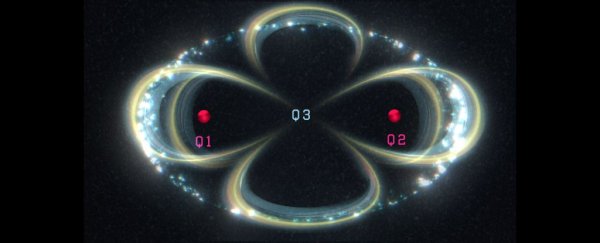A major milestone has just been reached in quantum computing.
Three separate teams around the world have passed the 99 percent accuracy threshold for silicon-based quantum computing, placing error-free quantum operations within tantalizing grasp.
In Australia, a team led by physicist Andrea Morello of the University of New South Wales achieved 99.95 percent accuracy with one-qubit operations, and 99.37 percent for two-qubit operations in a three-qubit system.
In the Netherlands, a team led by physicist Seigo Tarucha of Delft University of Technology achieved 99.87 percent accuracy for one-qubit operations, and 99.65 percent for two-qubit operations in quantum dots.
Finally, in Japan, a team led by physicist Akito Noiri of RIKEN achieved 99.84 percent accuracy for one-qubit operations and 99.51 percent for two-qubit operations, also in quantum dots.
All three teams have published their results in the journal Nature today.
"Today's publication in Nature shows our operations were 99 percent error-free," Morello says.
"When the errors are so rare, it becomes possible to detect them and correct them when they occur. This shows that it is possible to build quantum computers that have enough scale, and enough power, to handle meaningful computation."
Quantum computing relies on quantum mechanics as the basis for operations. Information is encoded in qubits, or quantum bits, the quantum computing equivalent of binary bits, the basic units of information.
However, where bits process information in one of two states – a 1 or a 0 – a qubit can be in the state of a 1, a 0, or both simultaneously.
The latter state – 1 and 0 at the same time – is known as superposition. Maintaining the qubits' superposition enables quantum computers to solve complex mathematical problems by running calculations based on the probability of an object's state before it is measured. This endeavor is highly prone to error, however, and improving the fidelity of quantum operations has been the subject of intense study.
In 2014, Morello and his colleagues were able to demonstrate a whopping 35-second lifespan for quantum information in a silicon substrate. Their qubits were based on the spin states of nuclei, which, isolated from their environment, enabled the setting of a new time benchmark. But that very isolation proved a problem, too: it made it harder for the qubits to communicate with each other, which is necessary for performing quantum computation.
To resolve this issue, Morello and team introduced an electron to their system of two phosphorus nuclei via ion implantation into the silicon, one of the fundamental processes for making microchips. This is how they created their three-qubit system, and it worked.
"If you have two nuclei that are connected to the same electron, you can make them do a quantum operation," said physicist Mateusz Mądzik of UNSW.
"While you don't operate the electron, those nuclei safely store their quantum information. But now you have the option of making them talk to each other via the electron, to realise universal quantum operations that can be adapted to any computational problem."
The other two teams took a different approach. They created quantum dots of silicon and silicon-germanium alloy, and installed a two-electron qubit gate; that is, a circuit of multiple qubits. Then, they tweaked the voltage applied to their respective systems, using a protocol called gate set tomography to characterize their systems.
Both teams found that they too had achieved higher than 99 percent fidelity in their systems.
"The presented result makes spin qubits, for the first time, competitive against superconducting circuits and ion traps in terms of universal quantum control performance," says Tarucha.
"This study demonstrates that silicon quantum computers are promising candidates, along with superconductivity and ion traps, for research and development toward the realization of large-scale quantum computers."
Any one of these papers alone would be a significant achievement. The fact that all three teams have reached the same milestone independently suggests that quantum computing will now be surging ahead.
"You typically need error rates below 1 percent, to apply quantum error correction protocols," Morello says.
"Having now achieved this goal, we can start designing silicon quantum processors that scale up and operate reliably for useful calculations."
The three papers have been published in Nature. They can be found here, here and here.
